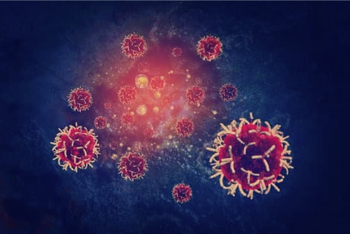
PIM1 Inhibitors May Help Combat Triple-Negative Breast Cancer
Two new studies are suggesting that PIM1 inhibitors, which are already in clinical trials for leukemia and multiple myeloma (MM), may help combat triple-negative breast cancer.
Two new studies are suggesting that PIM1 inhibitors, which are already in clinical trials for leukemia and multiple myeloma (MM), may help combat triple-negative breast cancer (TNBC). Triple-negative cancers do not express receptors for estrogen or progesterone or HER2 (human epidermal growth factor 2). Subsequently, patients with these cancers are not candidates for hormonal therapies or the HER2-targeted drug trastuzumab (Herceptin).
Currently, there are no targeted therapies for this subtype of cancer, which is associated with the poorest outcomes. However, it appears that a cancer-driving protein called MYC may be involved and could lead to a new form of targeted therapy for TNBC.
Previous studies have shown that MYC expression is disproportionately higher in triple-negative tumors than in tumors expressing hormone receptors and/or HER2. The new studies,
Investigators at the University of California San Francisco (UCSF) and colleagues report that small molecule PIM kinase inhibitors halted the growth of human triple-negative tumors with elevated MYC expression in patient derived tumor xenograft. This was also replicated in MYC-driven transgenic mouse models of breast cancer.
“The next step is to figure out how to bring this finding into early-phase clinical trials with patients, and we’re partnering with pharmaceutical companies to explore this,”
In Dr. Goga’s UCSF laboratory, thousands of short hairpin RNAs (shRNAs) were sequentially introduced to target kinases proteins. The experiments revealed that MYC depends on a number of kinases to drive cell growth, but most especially on PIM1. When shRNAs deactivating PIM1 were introduced to cells expressing MYC, those cells died, demonstrating a synthetic lethal relationship between MYC and PIM1.
Interestingly, a complementary paper in the same issue of Nature Medicine by researchers at the Institute of Cancer Research (ICR) in London, led by Professor Andrew Tutt, Head of the Division of Breast Cancer Research and Director of Breast Cancer Now’s Research Center at the ICR, also pointed to PIM1 as a target in TNBC. The ICR team arrived at this conclusion using completely different methods than those used by Goga and colleagues.
The PIM-1 oncogene was first described in relation to murine T-cell lymphomas. PIM-1, PIM-2, and PIM-3 are serine/threonine kinases. They are involved in a number of signaling pathways in cancer cells. Studies have shown that PIM kinases are upregulated in many different cancer types, including lymphoma, leukemia, multiple myeloma, prostate, gastric, and head and neck cancers.
Newsletter
Stay up to date on recent advances in the multidisciplinary approach to cancer.





















































































